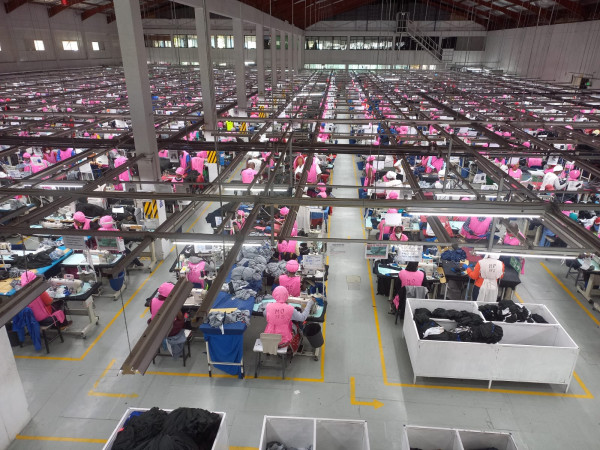Kenyan private sector records uptick in jobs

Kenya’s private sector experienced its first increase in employment rates in three months, with hiring rising at the fastest pace seen in the five months to October.
According to the latest data from the Stanbic Bank Kenya Purchasing Managers’ Index (PMI), this improvement was primarily driven by higher activity levels among firms, which experienced a steady recovery in new orders.
“The seasonally adjusted Employment Index rose above the 50.0 no-change mark in October, indicating a modest increase in workforce numbers at Kenyan companies,” the report stated, pointing to positive, though mild, hiring trends.
However, despite this uptick, job creation was limited primarily to temporary positions. As firms aimed to boost capacity without committing to long-term hires, employment gains remained cautious. This trend of restrained hiring contributed to a continued reduction in backlogs across the private sector, marking the first monthly decline in unfinished work since February.
Pressure on capacity
Though the backlog depletion was slight, it contrasted with previous months, where stable workforce numbers indicated little pressure on capacity, and companies felt minimal need to replace staff.
October also saw a gradual improvement in business output, recording the second expansion in three months. This was a recovery from the minor dip in September, with nearly a third of surveyed firms noting an increase in activity. However, the growth was balanced by 29 percent of companies reporting a decline in activity, reflecting a mixed performance across sectors.
The PMI report reflected this cautious optimism with a rise from 49.7 in September to 50.4 in October, signaling a modest upturn in the private sector’s health. “The headline PMI ticked back above the 50.0 no-change mark in October, showing renewed, albeit marginal, improvement,” noted the report.
Uptick in business output
Mulalo Madula, Senior Analyst at Standard Bank, observed that the uptick in business output was a direct result of steady new orders and a resurgence in client interest, particularly in key sectors like agriculture, construction, and wholesale and retail. “The increase in output underscores a resurgence in sales and demand, although growth was tempered by declines in the manufacturing and services sectors, which saw a mixed performance,” Madula explained.
Increased sales and greater client engagement were the primary drivers behind October’s activity gains, yet the rise in demand remained marginal. Many firms continue to face persistent cash flow constraints, challenging economic conditions, rising operational costs, and lingering political uncertainty. These factors collectively tempered the overall pace of growth, as businesses struggled to balance recovery efforts with external pressures.
October’s modest activity increase also came amid improving operating conditions at the start of the fourth quarter, providing companies with a foundation for cautious optimism. Many firms are now looking ahead, anticipating further expansion in output and planning for growth in the coming months.
Several businesses have outlined strategies to open new locations and invest in product development, marketing, and digital platforms to attract and engage more customers.
A significant increase in purchasing activity also pointed to businesses’ preparations for future demand. “Firms have ramped up purchasing, leading to the sharpest increase in inventories since August 2023,” Madula noted. This rise in stockpiling indicates a proactive response to anticipated demand, as companies position themselves to meet expected sales increases.
Despite this optimism, the mixed performance across sectors remains a challenge. While agriculture, construction, and retail sectors showed positive growth trends, manufacturing and services struggled to keep pace. Many manufacturing firms, in particular, have been hit by high input costs and continued supply chain disruptions, which have slowed recovery. The services sector also felt the impact of high costs and reduced consumer spending, a trend exacerbated by the uncertain economic environment.
Looking ahead, firms remain cautiously optimistic, with many signaling intentions to invest in growth strategies despite persistent challenges. Investments in digitalization, marketing, and product development are likely to play a crucial role in boosting long-term resilience, helping businesses better navigate the complex landscape of fluctuating demand and operational costs. Additionally, the anticipated opening of new locations reflects confidence that demand will stabilize, allowing firms to expand their footprint across Kenya’s diverse regions. In sum, October’s employment and output data from the PMI report highlight both progress and ongoing challenges for Kenya’s private sector.
While the recent uptick in hiring and activity points to a gradual recovery, businesses are operating in a volatile environment that necessitates cautious, strategic planning. As Kenya’s private sector continues to navigate these challenges, the focus on balanced, measured growth—driven by demand anticipation and adaptive strategies—will be essential for sustaining progress and building resilience against future economic pressures.















